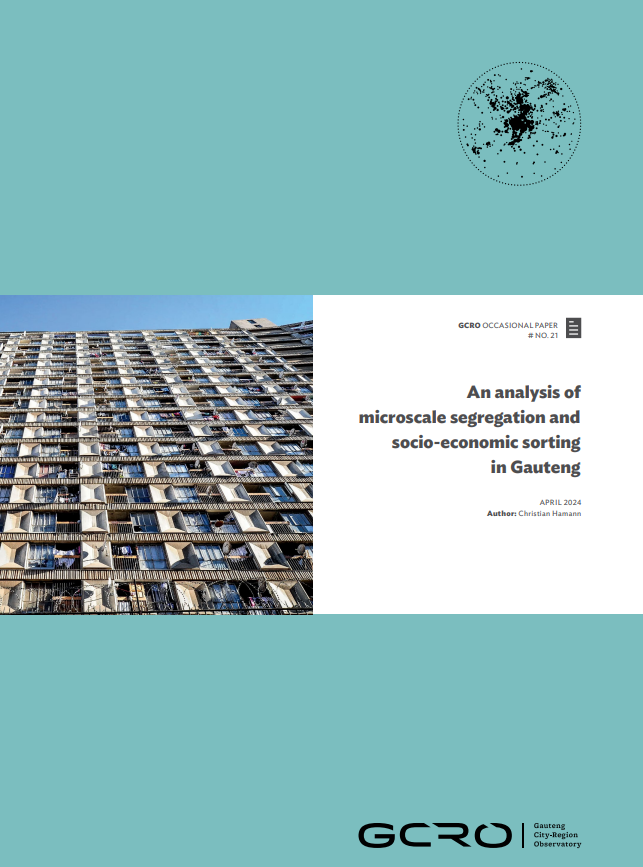An analysis of microscale segregation and socio-economic sorting in Gauteng

22 April 2024
Gauteng City-Region Observatory
English
Research report
Gauteng City-Region Observatory
Africa
This Occasional Paper delves into the enduring impact of apartheid on urban development, particularly focusing on racial segregation and socio-economic sorting in Gauteng, South Africa. Through a meticulous examination, it sheds light on how factors such as residential expansion, housing policies, and neighbourhood characteristics influence these patterns. The study encompasses three key enquiries: firstly, the correlation between racial diversity and residential growth, revealing a tendency for new areas to mirror existing racial compositions; secondly, the discovery of persisting racial income disparities within supposedly integrated neighbourhoods; and thirdly, an exploration of how housing affordability and neighbourhood traits shape socio-economic sorting. While macro-scale analysis shows varying levels of desegregation across Gauteng, micro-level insights underscore the uneven nature of progress and the importance of diversified housing and inclusive neighbourhood development for fostering true spatial transformation and equitable access to urban opportunities.
Abstract based on source.



Comments